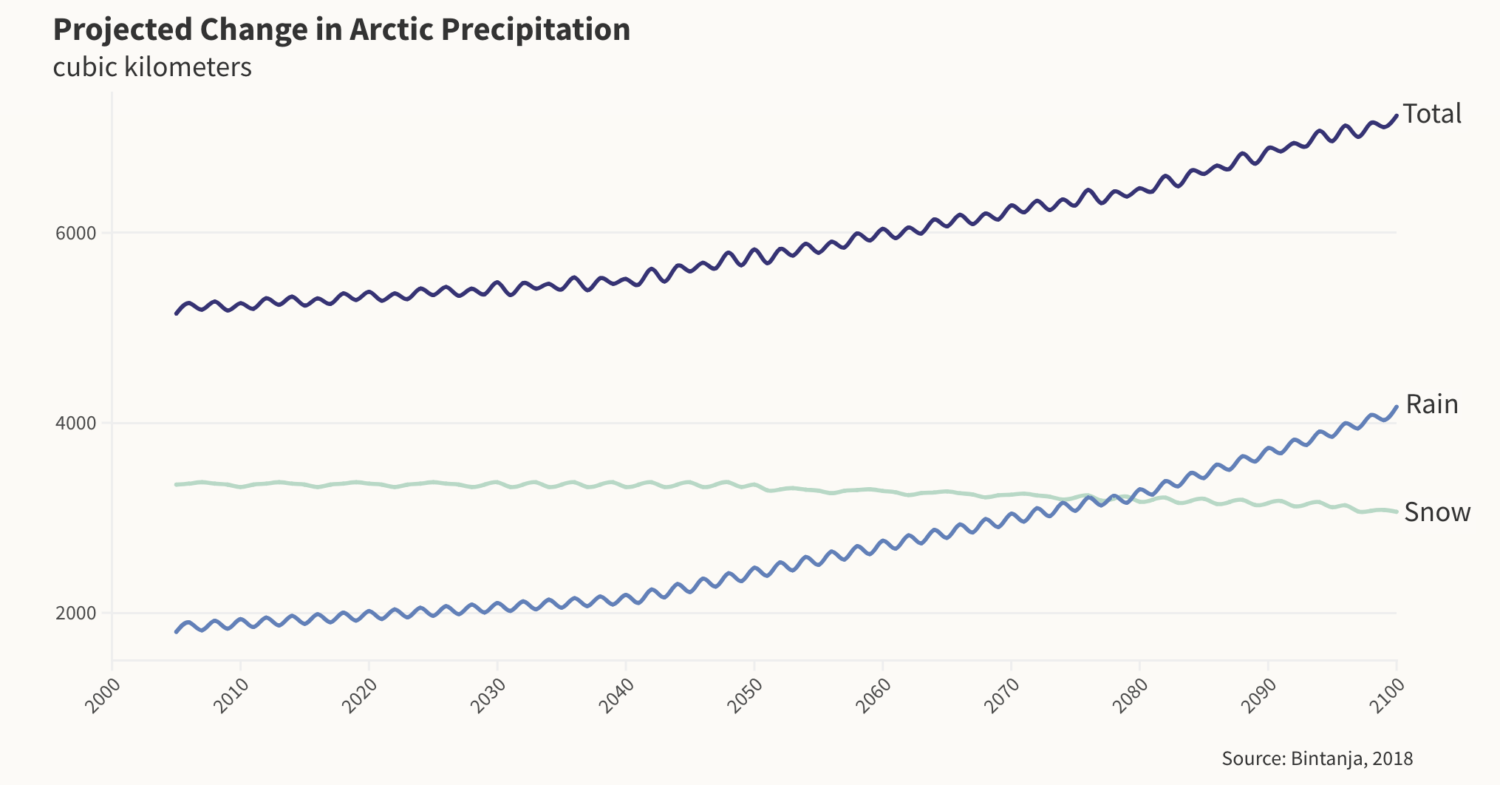
Rain used to be rare in most parts of the Arctic: the polar regions were, and still are, usually too cold and dry for clouds to form and absorb moisture. When precipitation did occur, it most often came as snow.
Twenty years ago, annual precipitation in the Arctic ranged from about 10 inches in southern areas to as few as 2 inches or less in the far north. But as Arctic temperatures continue to warm three times faster than the planet as a whole, melting sea ice and more open water will, according to a recent study, bring up to 60 percent more precipitation in coming decades, with more rain falling than snow in many places.
The precipitation will trigger more flooding; an acceleration in permafrost thaw; profound changes to water quality; more landslides and snow avalanches; more misery for Arctic animals, many of which are already in precipitous decline due to the shifting climate; and serious challenges for the Indigenous peoples who depend on those animals.
Changes can already be seen. Thunderstorms are now spawning in places where they have historically been rare. In 2022, the longest thunderstorm in the history of Arctic observation was recorded in Siberia. The storm lasted nearly an hour, twice as long as typical thunderstorms in the south. Just a few days earlier, a series of three thunderstorms had passed through a part of Alaska that rarely experiences them.
Rick Thoman, a climate scientist based at the University of Alaska Fairbanks, says that rainfall at any time of year has increased 17 percent in the state over the past half century, triggering floods that have closed roads and landslides that, in one case, sent 180 million tons of rock into a narrow fjord, generating a tsunami that reached 633 feet high — one of the highest tsunamis ever recorded worldwide.
It was hunters who first reported, in 2003, that an estimated 20,000 muskoxen had starved to death on Banks Island, in Canada’s High Arctic, following an October rain-on-snow event. It happened again in the winters of 2013-2014 and in 2020-2021, when tens of thousands of reindeer died on Siberia’s Yamal Peninsula. In both places, the rain had hardened the snow and, in some places, produced ice, which made it almost impossible for the animals to dig down and reach the lichen, sedges, and other plants they need to survive the long winter.
Kyle Joly, a wildlife biologist with the U.S. National Park Service, views an increase in rain-on-snow events as yet another serious challenge for the world’s 2.4 million caribou, which have been in rapid decline pretty much everywhere over the past three generations. The ebbing numbers are a huge concern for northern Indigenous people who rely on caribou for food. Public health experts fear that Indigenous health will be seriously compromised if the animals can no longer be hunted.
Alaska’s western Arctic herd, which has been, at times, the largest in North America, had 490,000 animals in 2003 but just 152,000 in 2023. But at least that herd can still be hunted. In Canada’s central Arctic, the Bathurst herd has plummeted from roughly 470,000 animals in the 1980s to just 6,240 animals today; hunting those caribou in the Northwest Territories is currently banned.
It’s not just caribou and muskoxen that are being threatened. There is growing evidence that rain falling in parts of the Arctic where precipitation usually arrives as snow is killing peregrine falcon chicks, which have only downy feathers to protect them from the cold. Once water soaks their down, the chicks succumb to hypothermia.
In 2007, Serreze stated in a University of Colorado Boulder study that the Arctic may have reached a climate-change tipping point that could trigger a cascade of events. More rain than snow falling in the Arctic is one such event, and he expects more surprises to come. “We are trying to keep up with what is going on,” he says, “but we keep getting surprised.”